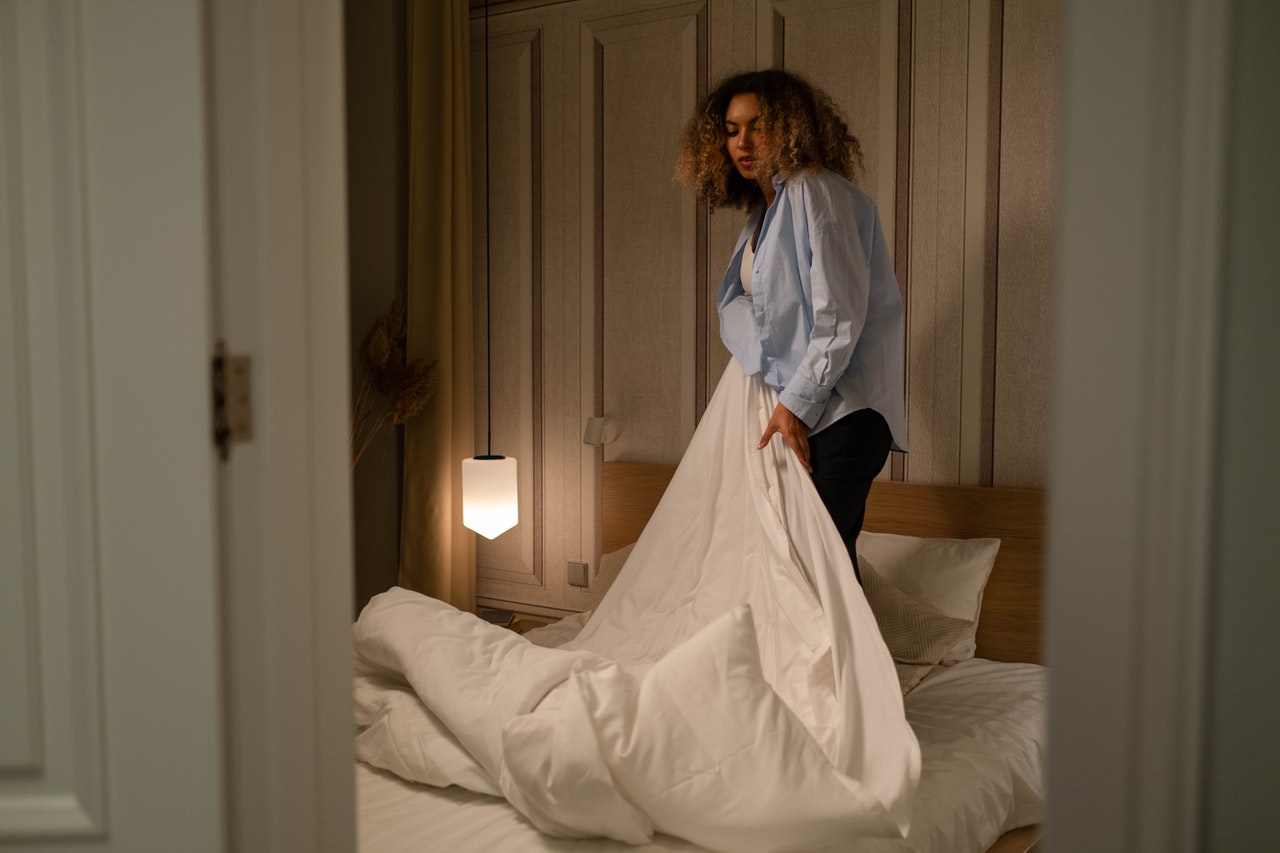Not many people could tell you the difference between a comforter and a duvet. How, exactly, do they differ, and, for that matter, can you put a duvet cover over a comforter? Let’s find out!
Comforter vs. Duvet - Explained!
Firstly, a comforter is an insulated, fluffy blanket that provides warmth and height to your bed. Traditional comforters are usually decorative in nature, stitched throughout to keep the filling evenly distributed, and are intended to sit on top of your sheets to create a layered look.
A duvet, on the other hand, is a soft flat bag filled with down, feathers, or synthetic material, that fits into a decorative and protective cover, and is used instead of upper sheets and blankets.
Let’s Talk More About Duvets!
Because a duvet itself isn’t meant to be stylish, it requires a duvet cover to add its own color or style. Having the ability to switch out your cover can be a great advantage, though! It allows for easy washing and gives you the ability to switch your style seasonally or match your current bedding. Alternatively, this also allows you to switch out duvets of different thicknesses between seasons to accommodate fluctuations in temperature.
That being said, many purchasers stay clear of duvets. Because they’re meant to have a more unfinished look, they’re often not stitched to keep the filling evenly distributed (as comforters are) and they require a duvet cover, which is often ill-fitted, causing the duvet to shift and bunch, becoming uncomfortable and unsightly.
Let’s Talk More About Comforters!
Because comforters are decorative in nature, they’re traditionally sold with coordinating pieces meant to be used together on the same bed. Like duvets, they are sold in different sizes, thicknesses, and weights to address everyone’s individual preferences. They’re meant to be added as the top layer to your bed and not covered with additional accessories. Simple as that!
But can you put a duvet cover over a comforter? Of course, you can! Although a comforter is meant to be the top layer and finishing piece in your bed set, if you’re looking to change up the color or style of your comforter, a duvet cover is an affordable way to do so – just keep in mind that you may run into the same ill-fitting issues as you did with the traditional duvet/duvet cover duo.
What Design Is Right For You?
Now that you know the difference between these two styles (and we’ve answered the question, ‘can you put a duvet cover over a comforter?’), what design is right for you? With the Sleeptone comforter, you don’t have to choose! With its’ elegant design and functionality, it’s great for all seasons and offers the benefits of both a duvet and a comforter.
Sleeptone’s comforters are designed with discrete corner loops that allow the comforter to be fastened to the inner corners of a duvet cover (so, if you’re still asking the question, ‘can you put a duvet cover over a comforter?’, the inclusion of this innovative feature should undoubtedly answer that!). These loops help to avoid the unsightly and uncomfortable shifting and bunching you get from traditional duvet cover sets.
Sleeptone comforters are also specially engineered to allow comfort throughout all 4 seasons, offering an affordable alternative to purchasing multiple duvets or comforters of different weights and thicknesses. With elegant and classy designs that will give your bedroom the perfect combination of comfort and luxury, one Sleeptone Comforter is all you’ll need.
The new Tranquility Comforter Collection by Sleeptone include ultra-plush and soft comforters that are lightweight, cozy, hypoallergenic, and breathable, combining all of the advantages of both comforters and duvets and wrapping them up in a nice little package!
Want to learn more? Check out the 2022 catalog Tranquility Comforter Collection by Sleeptone.




Leave a comment
This site is protected by hCaptcha and the hCaptcha Privacy Policy and Terms of Service apply.